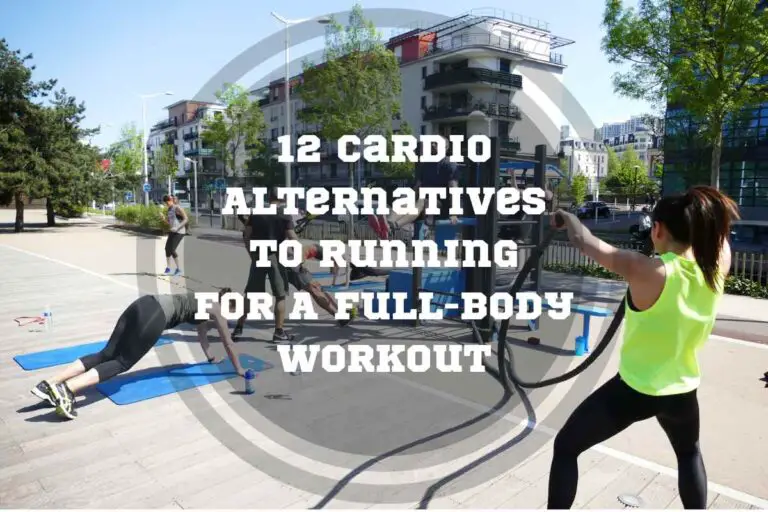Benefits of Sprinting: Boost Your Fitness and Well-Being
With the busy lives that we live, it can be hard to fit in exercise, and stay healthy. Unlocking the benefits of sprinting can give you a boost in your physical fitness, whether you are already active or just getting started.
In this article, we will explore the different forms of sprinting and its impact on your health, and provide some tips on how to properly do it effectively. Read on if you want to unleash your inner athlete!
What are the benefits of sprintings?
What do sprints help with? Sprinting is a type of running exercise that activates multiple muscles and helps burn calories. Regular short sprint sessions are beneficial to improve heart rate, increase stamina, and develop strength while burning calories. There are various forms of sprints, such as short intervals, long runs, resisted sprints, and hill sprinting, all of which have different health benefits.
What Is Sprinting Exercise?
A sprint is a running exercise where people use as much speed as possible over a predetermined distance. Sprinting is an exercise practiced by a variety of individuals, including athletes, fitness enthusiasts, and those looking to improve their speed and explosiveness.
This running technique focuses on increasing stride length and frequency in order to achieve maximum velocity with great efficiency. While sprinters training for track events typically strive for maximum speed over distances up to 400 meters, those looking to stay fit or train for another sport might find that distances between 40-100 meters are best suited for their needs.

5 Types of Sprint
From short sprints to hill sprints, see what types of sprinting are available and find the right one for your fitness goals.
1. Short Sprints
Short sprints offer tremendous benefits to runners of all levels. They usually range from 10 to 100m and offer you increased muscle activation, more calorie expenditure, and enhanced cardiovascular fitness.
Short sprints can be used to greatly increase stamina and strengthen muscles while burning calories.
2. Long Sprints
In comparison to short sprints of up to 100 meters, long sprints usually involve distances ranging from 200 meters to 400 meters.
Sprinting is important for runners who want visible results, like toning and reducing body fat. Longer sprints are a great full-body workout that increase the metabolic rate, thereby burning more calories.
3. Resisted Sprints
Resisted sprinting is a type of speed training designed to work the muscles at maximum force in order to produce power. This higher intensity form of exercise helps your body build muscle and increase speed, while also providing many other health benefits.
During resisted sprints, bands or weights are used for added resistance as you activate multiple muscle groups during the exercise. This forces your muscles to work harder than with regular running, resulting in increased strength and endurance.
4. Interval Sprints
Interval sprints are a great way for runners to kick their training routine up a notch. This type of sprinting involves alternating periods of short, high-intensity bursts with periods of active recovery.
Intervals offer many advantages, including anaerobic fitness, improved speed, and increased endurance. These sprints also develop cardiovascular capacity and aerobic power.
5. Hill Sprints
Hill sprints are a powerful running exercise that strengthens leg muscles and develops explosive power. These intense workouts can help build running fitness, improve conditioning and endurance, enhance overall speed, create explosiveness in motion, and even improve running efficiency.
Hill sprints involve running up an incline such as a hill or stadium steps at maximum effort over short distances. Such exercises increase the strength of muscles and tendons.
What Sprinting Does to Your Body: 4 Health Benefits of Sprinting
Is sprinting good for you? Read on to uncover all the ways sprinting can benefit your body.
1. Muscle Growth
Sprinting is a great way to improve muscle growth and increase strength. It stimulates the release of testosterone, human growth hormone (HGH), and other hormones that promote protein synthesis and fat burning.
This makes sprinting an ideal addition to any weightlifting routine or workout program. Sprinting is also excellent for explosive movements that help build stronger muscles, while also helping to maintain a healthy body mass as you reduce body fat.
2. Improved Metabolism
Short, high-intensity runs not only give you speed and agility, but also improve your metabolism. Sprint training increases metabolic rate by engaging larger amounts of muscle tissue than long-distance running or jogging at a steady pace does.
This higher-intensity workout causes the body to burn more calories both during and after sprinting, as compared to regular running.
3. Stronger Cardiovascular System
Is sprinting cardio? Yes, definitely! Regular sprints can increase your ability to process oxygen, which results in lower risk of heart disease. Sprinting also decreases cholesterol levels and blood pressure, and strengthens the heart muscle.
By incorporating short bursts of running at maximum effort into your daily routine, you can strengthen your overall cardiovascular system in just a few minutes per day.
4. Better Mental Health
Running and sprinting are shown to be incredibly helpful when it comes to mental wellness. It releases endorphins, the feel-good hormones in our brains, promoting a sense of relaxation and reducing stress.
Endorphins also help our brains battle pain resulting from injury or chronic ailments. Runners also benefit from the release of various neurotransmitters that boost focus, improve mood, develop greater self-awareness, and enhance overall alertness.

Sprinting Versus Other Types of Running
Is sprint the best form of running for speed and stamina? Let’s compare sprinting with jogging, tempo running, and long-distance runs.
Sprinting vs. Jogging
Short sprints require a lot of explosive energy. As a result, it helps build fast-twitch muscle mass, which is essential when trying to run faster.
Jogging, on the other hand focuses, more on building endurance over longer distances. It requires sustained energy output, which results in improved cardiovascular health but often does not raise the heart rate as much as sprinting.
Sprinting vs. Long-Distance Runs
Sprinting and long-distance running are both important to any runner’s training plan, though each comes with its own set of benefits. Sprinting focuses on higher intensity bursts of speed that develop explosive power and improve overall cardiovascular health.
On the other hand, distance runs are beneficial for increasing endurance over extended periods. This type of running also offers better protection for the hips and spine compared to sprinting, due to less impact forces being generated while running at a moderate pace.
Subscribe to Our Running Newsletter!
Get free running tips from renowned professional athletes and discounts from top-notch brands.
Sprinting vs. Tempo Runs
As you already know, sprinting is a high-intensity exercise that focuses on quick bursts of energy.
On the other hand, tempo runs involve continuous moderate-intensity running that lasts anywhere from 20 minutes to 1 hour at 70-80% of your maximum effort. By alternating between sprints and tempos in your workouts, you can reap maximum benefits for your cardiovascular system and muscles at different stress levels.
2 Advantages of Sprinting for Runners
Sprinting helps runners develop speed, better endurance, and increased focus and concentration.
1. Improved Speed and Endurance
Sprint training helps enhance aerobic fitness, increase muscle mass, improve endurance, and enable runners to cover distances faster.
It results in greater power output, which makes it easier to perform on race day. For long-distance runners, adding sprints into their routine develops explosive power that can help them break through performance plateaus and become faster than ever before.

2. Greater Focus and Concentration
Sprinting is an excellent way to boost focus and concentration, especially for runners. It can increase alertness, attention span, cognitive performance, and mental agility in the short term and long term.
Sprinting does this by raising your heart rate temporarily, which increases blood flow throughout your body, including to your brain. This helps keep you more alert and focused.
This helps you remain highly focused during running, making sprints great for developing both physical fitness and mental clarity.
How Often Should You Sprint?
Depending on your fitness goals, you may choose to sprint once a week or several times a week.
Pros and Cons of Everyday Sprints
Everyday sprinting is an intense form of high-intensity interval training (HIIT) used for speed training, running endurance, strength, and power building. While there are amazing benefits of sprinting every day when done correctly, this demanding exercise has its disadvantages, too.
Every runner needs rest time between activity sessions for proper recovery. If you sprint every day, it might hinder the recovery process, thereby diminishing your performance over the long term. It can also lead to injuries from overtraining.
Pros and Cons of Sprinting Several Times a Week
By sprinting two or three days a week, athletes can dramatically improve their muscular strength and endurance, especially when combined with other types of training, like weightlifting and interval workouts.
On the other hand, overuse injuries are likely if you spend too much time on intense bouts of running without allowing enough recovery time between sessions.
Pros and Cons of Sprinting Once a Week
Sprinting once a week is great for casual fitness enthusiasts or anyone looking for some variety.
One sprint per week usually does not involve an injury risk, if it is done properly. However, you might not develop your fitness as quickly as if you sprinted a few times per week.
How to Sprint Properly and Get the Most Out of It
Learning and mastering good technique is the key to maximizing your sprinting benefits.
Sprinting Tips for Beginners
To get the most out of sprinting, proper technique and form are key. Beginners should focus on starting slowly with short sprints at a low intensity before gradually progressing to longer distances and higher speeds.
Doing so improves speed, endurance, agility, and cardiovascular fitness, while still preventing injury. An important part of sprinting is warming up properly. This reduces strain on muscles for an effective workout.

Pro Tip:
Work on developing proper sprinting form (back straight and head steady but tilted slightly forward). A more efficient posture will help you run faster and more efficiently.
Sprinting Tips for Experienced Runners
Experienced runners know that a combination of sprinting and other running styles is important for overall fitness. Advanced sprinting methods involve a proper warm-up and cooling down stretches to avoid injury.
You need to listen to your body when pushing your intensity levels, gradually increasing the difficulty over time.

Pro Tip:
Vary your sprint distances (15-100 meters) or incorporate interval training (30 seconds max effort with 90 second rest). Focus on form while running at various speeds and pay attention to muscular fatigue during your reps.
The 4 Best Sprint Exercises
Let’s discuss the 4 best exercises for supercharging your fitness and maximizing your health benefits.

1. Descending Sprint Workout
A descending sprint workout is an extremely effective exercise for runners that focuses on developing speed, power, and strength. During this sprint exercise, multiple sprints of various distances are done with gradually decreasing recovery times.
This allows you to develop your fitness level quickly while also activating large amounts of muscle tissue during each set. Short rest periods result in increased calorie expenditure, which helps build muscular endurance and a stronger cardiovascular system.
2. Hill Sprint
Hill sprints are a powerful and intense form of exercise that can take your running performance to the next level. They involve sprinting up an incline, utilizing gravity’s resistance to engage multiple muscles in your body whilst improving biomechanical efficiency and running mechanics.
Hill sprints also help with stabilizing movement and preventing swaying, resulting in increased speed, power development, strength training, and improved physical fitness.
3. 30-Second Sprint with 90-Second Recovery
A 30-second sprint with 90-second recovery is one of the best ways for runners to unlock sprinting’s numerous benefits. This high-intensity interval training involves running at 90% maximum effort for 30 seconds, followed by a controlled walk or light jog for 90 seconds to recover.
During this active rest period, the heart rate will start to decline. It will then increase during the next sprint. Not only does this exercise effectively build strength and speed, but it also helps burn calories.
4. 60-Second Sprint with 60-Second Recovery
A 60-second sprint with a 60-second recovery is a high-intensity interval exercise that should be done at 70-75% of maximum effort.
This type of sprint is perfect for runners looking to increase speed or power performance while gaining physical strength. It helps build strong muscles in just seconds by utilizing short bursts of intense activity combined with quick recovery times between each burst.
Frequently Asked Questions About the Benefits of Sprinting
Why Sprinting Is Good for You?
Regular sprint workouts can lead to greater cardiovascular health. They also activate the body’s natural fat-burning process more efficiently than other forms of running, leading to improved metabolic health. Additionally, sprint intervals build muscle strength faster and improve speed and endurance.
Why Is Sprinting Good for Men?
Sprinting offers men a plethora of physical and mental health benefits, the most notable being increased muscle growth, improved cardiovascular health, and reduced stress. It releases hormones like testosterone and human growth hormone, which are needed for building lean muscle mass.
Can Sprinting Improve my Athletic Performance?
Sprinting is one of the most effective forms of running for overall athletic performance. It helps to build explosive power, allowing athletes to increase their speed, endurance, agility, coordination, balance, and flexibility.
Final Thought on the Benefits of Sprinting Intervals
Sprinting is one of the most efficient exercises for improving overall fitness and well-being. It can improve muscle growth, promote better cardiovascular health, boost metabolism, and enhance mental clarity and focus. It has numerous benefits for runners, such as increased strength, power, and speed, while also supporting healthy testosterone levels.
Due to its high-intensity nature and its ability to burn more fat than other types of running, sprinting stands out as an effective method of transforming both body composition and fitness level in a short period of time.
How often do you include sprints in your running program? Please share your experience in the comments below.
Also Read:
- How Many Miles 15K
- How Long Is a Spartan Race
- Is Running After Leg Day Bad
- Are Air Max Good for Running
- Best Running Shoes for Concrete
- Neutral vs Stability Running Shoes
- Best Running Rain Jackets
- Are Nike True to Size
- 2 Miles Is How Many Steps
- Best Running Shoes for Older Men
References:
- Batacan RB, et al Effects of high-intensity interval training on cardiometabolic health: a systematic review and meta-analysis of intervention studies British Journal of Sports Medicine 2017;51:494-503. https://bjsm.bmj.com/content/51/6/494
- Vollaard NBJ, et al. Research into the Health Benefits of Sprint Interval Training Should Focus on Protocols with Fewer and Shorter Sprints. Sports Med. 2017 Dec;47(12):2443-2451. doi: 10.1007/s40279-017-0727-x. https://link.springer.com/article/10.1007/s40279-017-0727-x
- Koral J, et al. Six Sessions of Sprint Interval Training Improves Running Performance in Trained Athletes. J Strength Cond Res. 2018 Mar;32(3):617-623. doi: 10.1519/JSC.0000000000002286. PMID: 29076961 https://journals.lww.com/nsca-jscr/fulltext/2018/03000/six_sessions_of_sprint_interval_training_improves.5.aspx
- Beyranvand, Fatemeh. (2017). Sprint Interval Training Improves Aerobic and Anaerobic Power in Trained Female Futsal Players. International Journal of Kinesiology and Sports Science. https://www.researchgate.net/publication/317432141_Sprint_Interval_Training_Improves_Aerobic_and_Anaerobic_Power_in_Trained_Female_Futsal_Players
- Oswald F, et al. A Scoping Review of the Relationship between Running and Mental Health. Int J Environ Res Public Health. 2020 Nov 1;17(21):8059 https://www.mdpi.com/1660-4601/17/21/8059
- Nalcakan GR. The Effects of Sprint Interval vs. Continuous Endurance Training on Physiological And Metabolic Adaptations in Young Healthy Adults. J Hum Kinet. 2014 Dec 30;44:97-109. https://www.ncbi.nlm.nih.gov/pmc/articles/PMC4327385/
- Winkelman NC, et al. Experience level influences the effect of attentional focus on sprint performance. Hum Mov Sci. 2017 Apr;52:84-95 https://www.sciencedirect.com/science/article/abs/pii/S0167945717300714?via%3Dihub
- Burgomaster KA, et al. Effect of short-term sprint interval training on human skeletal muscle carbohydrate metabolism during exercise and time-trial performance. J Appl Physiol (1985). 2006 Jun;100(6):2041-7 https://journals.physiology.org/doi/full/10.1152/japplphysiol.01220.2005
If you have any questions or suggestions, you can contact us via email – [email protected]






